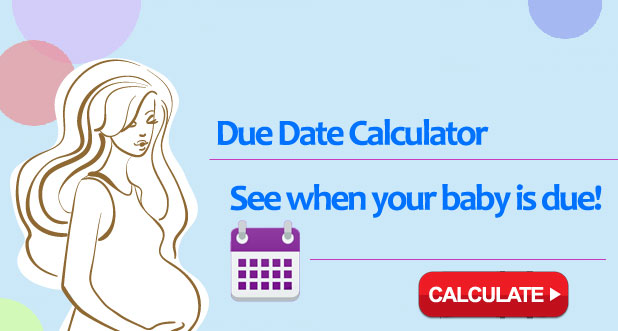Estimated Date of Delivery Calculator
Congratulations on your pregnancy. You must be very eager to plan ahead and want to know your expected delivery date (EDD). But before you sit down to do the calculations it’s wise to keep a few points in mind:
- Calculated expected due date may or may not be accurate always.
- Depending on your pregnancy and fetal development your labour can either happen before or few days after your EDD.
- It is easier to calculate the date if you have a regular menstrual cycle.
- In case of irregular periods if you do not remember the date of your last menstrual period, it might get tricky to calculate the expected due date without medical help like a sonography.
- A normal pregnancy lasts for about 40 weeks. But in case of multiple pregnancies or induced labour the expected due date might change or defer.
- Expected due date is only an approximation and not a date set on stone for your delivery.
Knowing the above facts you can start calculating EDD in the following ways:
Based on your last menstrual period:
The Naegele’s formula is simple arithmetic method for calculating the EDD (estimated date of delivery) based on the LMP (last menstrual period).
- First recollect the first day of your last menstrual period or LMP. In case of a 28-day cycle ovulation happens around 14 days before the LMP and for a 40-day cycle it can happen probably on the 26th day.
- Add 40 weeks to this date. A normal healthy pregnancy would last about 280 days or 40 weeks or nine months. For instance, if your LMP is September 7, 2013 your EDD would be June 14 2014.
- Another alternative method to calculate the EDD is to subtract three months from the LMP, add seven days to it and change the year to the next one. For example, if your LMP was September 7, 2013 go backwards three months i.e. June 7, 2013. Now add seven days to it which makes it June 14. Now change the year by one and your EDD is June 14 2014.
Doing an ultrasound:
- Calculating EDD based only on LMP may not always be accurate. An ultrasound stands to be of great help to calculate the EDD. This is done after a doctor’s consent and at a sonography clinic.
- Ultrasound can also help to predict the due date for women with irregular periods who can’t keep a track of their LMP.
- Be prepared for a little discomfort as this would be a transvaginal ultrasound done to check on the gestational age, position and calculate EDD. Abdominal ultrasounds during early pregnancy can’t help in achieving the same parameters
Online Due Date calculator:
Technology has really made our lives simple. All you need to do is give in your LMP and the calculations are done for you with any hassles. In a few seconds your EDD would flash on your computer screen.
[simple_pregnancy_calculator]
